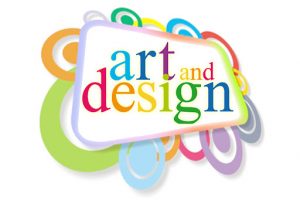- TEAM CURBAR
- OUR LEARNING
- Curbar Curriculum
- Teaching and Learning at Curbar 2023 – 2024
- Bumble Bees – Reception
- Busy Bees – Years 1 and 2
- Birch – Years 3 and 4
- Elder – Years 5 and 6
- Remote Learning
- Forest School and Outdoor Learning at Curbar
- Purple Mash
- How to stay safe online
- ALL ABOUT US
- PARENT ZONE
- INFORMATION
- Safeguarding is everyone’s business!
- Admissions Information 2023 – 24
- Anti Bullying Commitment
- End of Key Stage results 2018 – 19
- GDPR (General Data Protection Regulations)
- Pupil Premium and Recovery Premium 2023
- PE and Sport Premium 2023
- OFSTED
- SEND Information 2023 – 24
- School Policies and Procedures
- School Improvement 2023 – 24
- CONTACT

- TEAM CURBAR
- OUR LEARNING
- Curbar Curriculum
- Teaching and Learning at Curbar 2023 – 2024
- Bumble Bees – Reception
- Busy Bees – Years 1 and 2
- Birch – Years 3 and 4
- Elder – Years 5 and 6
- Remote Learning
- Forest School and Outdoor Learning at Curbar
- Purple Mash
- How to stay safe online
- ALL ABOUT US
- PARENT ZONE
- INFORMATION
- Safeguarding is everyone’s business!
- Admissions Information 2023 – 24
- Anti Bullying Commitment
- End of Key Stage results 2018 – 19
- GDPR (General Data Protection Regulations)
- Pupil Premium and Recovery Premium 2023
- PE and Sport Premium 2023
- OFSTED
- SEND Information 2023 – 24
- School Policies and Procedures
- School Improvement 2023 – 24
- CONTACT
- TEAM CURBAR
- OUR LEARNING
- Curbar Curriculum
- Teaching and Learning at Curbar 2023 – 2024
- Bumble Bees – Reception
- Busy Bees – Years 1 and 2
- Birch – Years 3 and 4
- Elder – Years 5 and 6
- Remote Learning
- Forest School and Outdoor Learning at Curbar
- Purple Mash
- How to stay safe online
- ALL ABOUT US
- PARENT ZONE
- INFORMATION
- Safeguarding is everyone’s business!
- Admissions Information 2023 – 24
- Anti Bullying Commitment
- End of Key Stage results 2018 – 19
- GDPR (General Data Protection Regulations)
- Pupil Premium and Recovery Premium 2023
- PE and Sport Premium 2023
- OFSTED
- SEND Information 2023 – 24
- School Policies and Procedures
- School Improvement 2023 – 24
- CONTACT
|
Art and Design
Intent
Art has the ability to transmit joy, transform sorrow, change minds and heal hearts. As artists, we aim to provide art lessons will inspire children to think innovatively and develop creative procedural understanding. Kapow’s Art and design scheme of work aims to inspire pupils and develop their confidence to experiment and invent their own works of art. Our scheme is written by experts in their field and designed to give pupils every opportunity to develop their ability, nurture their talent and interests, express their ideas and thoughts about the world, as well as learning about art and artists across cultures and through history.
The Kapow Art revised scheme of work is designed with five strands that run throughout. These are:
● Generating ideas
Units of lessons are sequential, allowing children to build their skills and knowledge, applying them to a range of outcomes. The formal elements, a key part of the National Curriculum, are also woven throughout units. Key skills are revisited again and again with increasing complexity in a spiral curriculum model. This allows pupils to revise and build on their previous learning. Units in each year
● Drawing
|
| At Curbar, we promote pupils’ SMSC development through art and design in the following ways:
|
| – We recognise that children are naturally creative. We give pupils the freedom, materials and space to enable them to use their creativity and imagination to communicate their inner most feelings. Pupils engage with a range of works of art that develop their understanding and respect for, different people’s feelings and values.
– We explore and discuss work from a wide range of artists that cross cultural boundaries and across time, allows pupils to investigate how moral and ethical issues are portrayed in art. – We support pupils to work productively together when creating works of art. Pupils are taught to recognise how their art and the art of others can communicate with those viewing the work, having a powerful impact on the emotions of others in their community. – We foster an interest in artistic opportunities and develop pupil’s appreciation of the range of different cultures that influence artists. Pupils will be supported to understand how these influences have shaped their own heritage and that of others.
Implementation
We use the Kapow scheme of learning for Art and Design.
Lessons are always practical in nature and encourage experimental and exploratory learning with pupils using sketchbooks to document their ideas. Differentiated guidance is available for every lesson to ensure that lessons can be accessed and enjoyed by all pupils and opportunities to stretch pupils’ learning are available when required. Knowledge organisers for each unit support pupils by providing a highly visual record of the key knowledge and techniques learned, encouraging recall of skills processes, key facts and vocabulary. Kapow Primary supports teachers who may lack confidence in their own artistic abilities. Pupil videos created by subject specialists help pupils to see art techniques modelled by experts, to ensure the delivery of Art in your school is of the highest quality. Each unit of lessons includes multiple teacher videos to develop subject knowledge and support ongoing CPD. Kapow has been created with the understanding that many teachers do not feel confident delivering the full Art and design curriculum and every effort has been made to ensure that they feel supported to deliver lessons of a high standard that ensure pupil progression.
Impact
Kapow Primary’s curriculum is designed in such a way that children are involved in evaluation, dialogue and decision making about the quality of their outcomes and the improvements they need to make. By taking part in our regular discussions and decision making processes, children will not only know facts and key information about art, but they will be able to talk confidently about their own learning journey, have higher metacognitive skills and have a growing understanding of how to improve. The impact of Kapow Primary’s scheme can be constantly monitored through both formative and summative assessment opportunities. Each lesson includes guidance to support teachers in assessing pupils against the learning objectives. An assessment spreadsheet including the learning outcomes for children with secure understanding and those working at greater depth enables teachers to keep records of summative assessments for each child. After the implementation of Kapow Primary’s Art and design scheme, pupils should leave primary school equipped with a range of techniques and the confidence and creativity to form a strong foundation for their Art and design learning at Key Stage 3 and beyond. The expected impact of following the Kapow Primary Art and design scheme of work is that children will: ★ Produce creative work, exploring and recording their ideas and experiences.
Please click on the Art and Design progression document below:
Art and Design progression of knowledge and skills
|
© Copyright 2023 Curbar Primary School
Telephone- 01433 630266 | Email- enquiries@curbar.derbyshire.sch.uk

